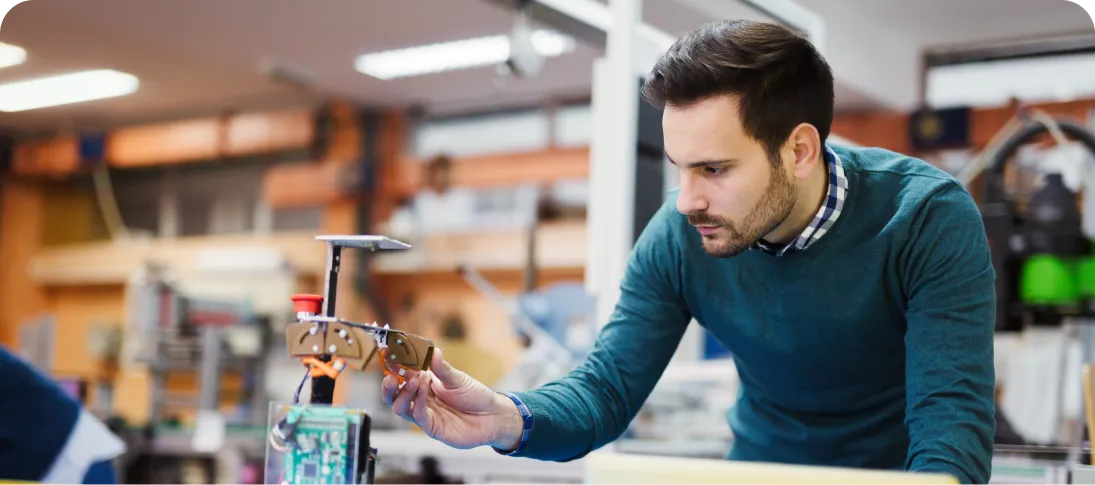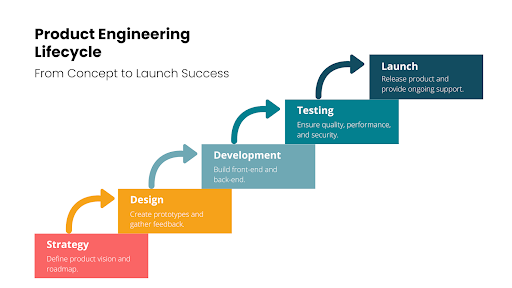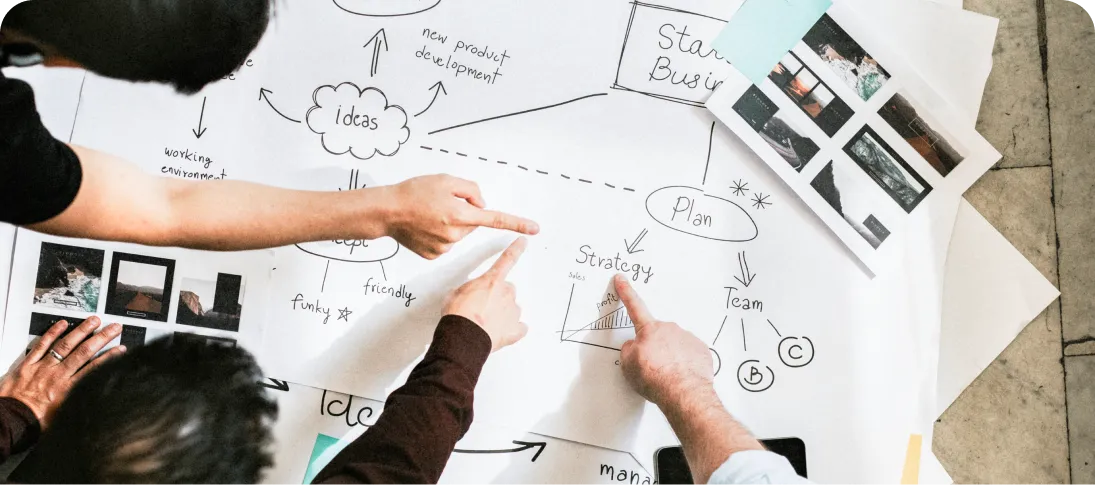
The Ultimate Guide to Product Engineering: From Strategy to Launch Success
Product engineering is a comprehensive process of transforming innovative ideas into fully functional, market-ready solutions. This process encompasses stages such as product strategy, design, development, testing, and finally, achieving launch success. Unlike traditional product development, product engineering focuses on optimising the entire product lifecycle, ensuring that the product is scalable, robust, and aligned with evolving market demands.
For businesses aiming to stay competitive and deliver customer-centric solutions, a strong product engineering strategy is crucial. It aligns the engineering process with overall business goals, ensuring that products not only meet but also exceed customer expectations.
Introduction to Product Engineering
In today’s fast-paced, technology-driven world, product engineering has become a pivotal part of bringing innovative ideas to life. Whether you are working on software, hardware, or a physical product, the engineering process ensures that the final solution is built to last. By integrating different elements such as design, development, and testing, product engineering helps shape the product to meet both technical requirements and user expectations.
The focus of product engineering extends beyond just development. It optimizes the entire product lifecycle, considering factors like scalability, long-term maintenance, and future market changes. This sets it apart from traditional product development, where the primary focus is on the immediate build phase.
Building a Product: In-House vs. Outsourcing
One of the first decisions in the product engineering process is determining whether to build the product in-house or outsource development to external partners. Both approaches have their benefits and challenges.
- In-House Development allows for greater control over the project. The team is closely aligned with the company's product strategy and business goals, making it easier to maintain consistency and vision.
- Outsourcing Development can accelerate the timeline and reduce costs by tapping into specialized engineering expertise. However, companies must ensure that outsourced teams stay aligned with the core objectives to prevent disconnects in the product vision.

Choosing between in-house and outsourcing comes down to evaluating your product roadmap, budget, and long-term business goals. Both methods can lead to launch success if planned carefully.
The Role of Product Strategy in Engineering
A well-defined product strategy is the foundation of successful product engineering. It includes creating a product roadmap that outlines each phase of development, from ideation to launch. A solid strategy ensures that the engineering team remains focused on delivering a product that aligns with both customer needs and business goals.
Elements of a strong product strategy:
- Feature prioritisation: Identifying which features bring the most value to users.
- Requirements definition: Ensuring the technical specifications are clearly documented.
- Market research: Understanding what competitors are offering and identifying market gaps.
Product Design and Prototyping
Once the product strategy is in place, the next crucial step in product engineering is design and prototyping. This phase translates the conceptual ideas into tangible designs that can be tested and validated. The design process, especially in UI/UX, ensures that the product is both functional and user-friendly.
Prototyping allows engineers to validate the design, identify potential issues, and gather user feedback before moving into full-scale development. This iterative process is crucial for ensuring that the product is built in alignment with the product strategy and user needs.
Engineering and Development Phases
After validating the design through prototyping, the actual development begins. The product engineering process covers both front-end and back-end development, ensuring a seamless user experience and solid functionality. The choice of technology stack is critical to delivering a scalable, future-proof product.
This phase includes:
- Software architecture: Laying the foundation for a scalable and robust product.
- Front-end development: Crafting the user interface and ensuring a smooth user experience.
- Back-end development: Managing databases, servers, and APIs that power the product.
Throughout this stage, teams must collaborate closely with product managers to ensure that the development aligns with the overall product roadmap and goals.
Testing and Quality Assurance in Product Engineering
Thorough testing is a critical part of product engineering. This phase ensures that the product functions as expected and meets all technical and user requirements. By incorporating various testing methods—such as functional, performance, and security testing—teams can identify and fix bugs before the product reaches users.
Quality assurance (QA) processes play a major role in reducing the risk of launching a flawed product. It’s crucial to test the product across different scenarios to ensure reliability and performance.
Agile Methodology in Product Engineering
In modern product engineering, adopting Agile methodology has become essential for teams to stay flexible and responsive to changes. Agile breaks down the product development process into smaller, manageable tasks called sprints, allowing teams to test, iterate, and improve on each step. This ensures the final product aligns with both market demands and user needs.
Benefits of Agile in product engineering:
- Faster time to market: Frequent iterations lead to quicker product releases.
- Better collaboration: Teams work closely together to solve problems in real-time.
- Customer feedback integration: Agile allows companies to respond quickly to user feedback, ensuring a better end product.
De-Risking Your Product Launch
A well-planned product launch can determine the difference between launch success and failure. Without proper preparation, even the best-engineered products can fail due to market timing, unmet expectations, or technical issues. To reduce risks, companies need to develop a comprehensive go-to-market strategy.
Considerations for de-risking your product launch:
- Market timing: Ensure your product launches when demand is at its peak.
- Go-to-market strategy: Develop a plan that includes marketing, distribution, and sales efforts.
- Customer onboarding: Make sure users understand how to use the product effectively from day one.
Post-Launch Support and Continuous Improvement
The work doesn’t stop after launch. In fact, post-launch support is vital for maintaining customer satisfaction and ensuring the product remains competitive in the market. This stage involves gathering feedback, addressing bugs, and continuously iterating the product.
Key areas to focus on in post-launch:
- Ongoing maintenance: Ensure timely updates to address bugs and performance issues.
- Feature expansion: Introduce new features to meet evolving customer needs.
- User feedback: Actively gather and incorporate feedback for continuous improvement.

Key Metrics for Measuring Launch Success
Tracking the right metrics post-launch is essential to measure the overall performance and success of the product. These metrics provide insights into how well the product is meeting customer needs and achieving business objectives.
Some important product engineering metrics include:
- Time to market: How quickly the product was developed and launched.
- Bug rates: Monitoring the number of post-launch defects that impact user experience.
- User retention and engagement: Measuring how often users return to the product and engage with its features.
- Customer Lifetime Value (CLV): Estimating the total revenue expected from a customer over their lifecycle with the product.
Trends and Innovations in Product Engineering
As technology evolves, so do the trends in product engineering. Staying ahead of these trends helps businesses remain competitive and create products that meet future demands. Some of the most influential trends include:
- Artificial Intelligence (AI) and Machine Learning (ML): Allowing products to learn from user behaviour and make intelligent decisions.
- Internet of Things (IoT): Creating connected devices that offer real-time data and personalised experiences.
- Sustainable product engineering: Focusing on reducing the environmental impact of product development through green practices.
Common Challenges in Product Engineering
Even with the best planning, product engineering comes with its own set of challenges. These can include:
- Managing resources and budgets: Keeping costs in check while ensuring high-quality development.
- Changing requirements: As market demands shift, the product requirements may need to change mid-development, creating delays.
- Cross-departmental collaboration: Ensuring communication between engineering, marketing, and sales teams is crucial for successful product launches.
The Importance of Product Re-Engineering
At times, companies need to re-engineer existing products to stay competitive or adapt to changing market needs. Product reengineering involves improving the design, features, or technology to extend the product's lifecycle and enhance its value proposition.
Re-engineering may be necessary due to:
- Technological advancements: Updating outdated technologies to improve product performance.
- Customer feedback: Implementing requested features or improvements to enhance user satisfaction.
- Market trends: Adapting the product to meet new market demands or opportunities.
Conclusion
Successfully navigating the complexities of product engineering requires a well-planned strategy, innovative design, and robust development processes. By adopting modern methodologies, focusing on user needs, and implementing effective QA, businesses can achieve launch success and maintain a competitive edge.
Accropolix provides expert consultation to guide you through each stage of the product engineering lifecycle—from initial strategy development to post-launch support. Whether you’re building a product from scratch or re-engineering an existing solution, Accropolix can help ensure long-term success through tailored, scalable solutions.


